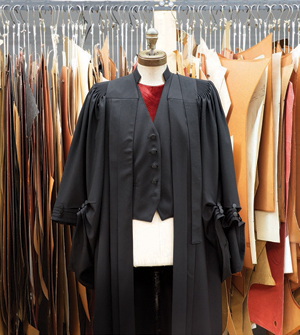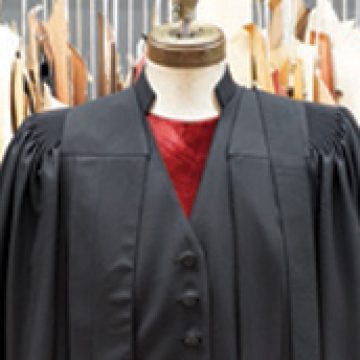
Paper patterns hang behind a legal gown made by Harcourts, which goes through 6,400 metres of fabric and 24,000 buttons each year
In a building just west of Toronto’s financial district, two dozen sewers stoop over workstations. Amid fabric-cutting tables and rows of humming sewing machines, these skilled hands are transforming cotton, wool and silk into flowing black legal gowns.
The company in charge is Harcourts, a leading robemaker for Canadian lawyers. And, this month, Harcourts is busier than ever: it needs to deliver about 600 gowns to Ontario law students for their called-to-the-bar ceremonies in June.
“We call it a factory, but it’s really a tailor shop,” says vice-president Brian Weese, standing in the Adelaide Street workshop.
Harcourts, which also makes academic gowns and clerical garments, has been in Toronto since 1842. Five years ago, the American-based robemaker Oak Hall Industries bought the company. But the new owners hardly changed a thing. The gowns are still stitched together locally, never offshore. And each one, a mix of priest’s cassock and Hogwarts uniform, looks exactly the same. “The one thing we are not,” says Weese, “is a slave to fashion.”
 This story is from our Summer 2017 issue.
This story is from our Summer 2017 issue.
Photo by Chris Thomaidis


